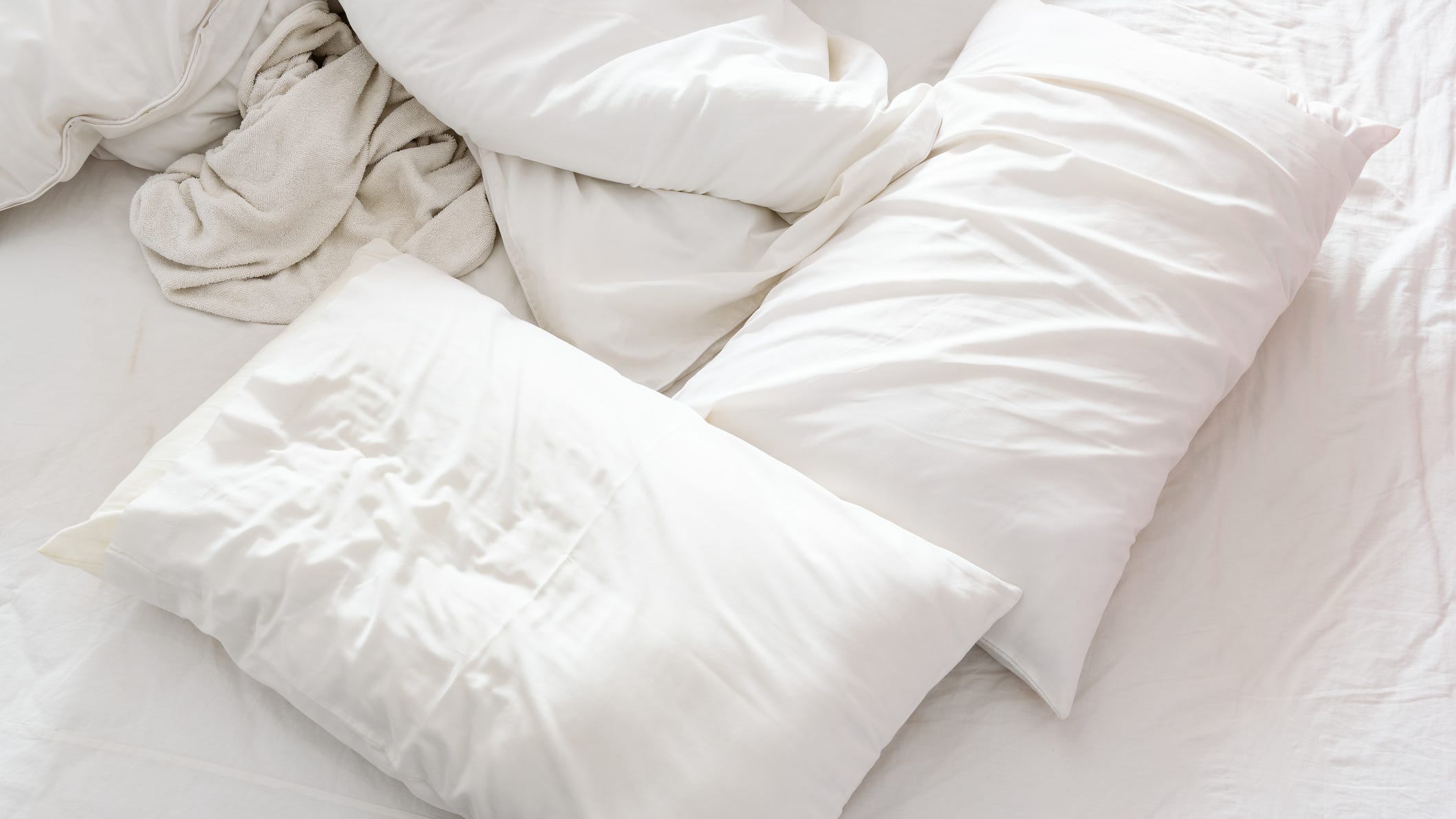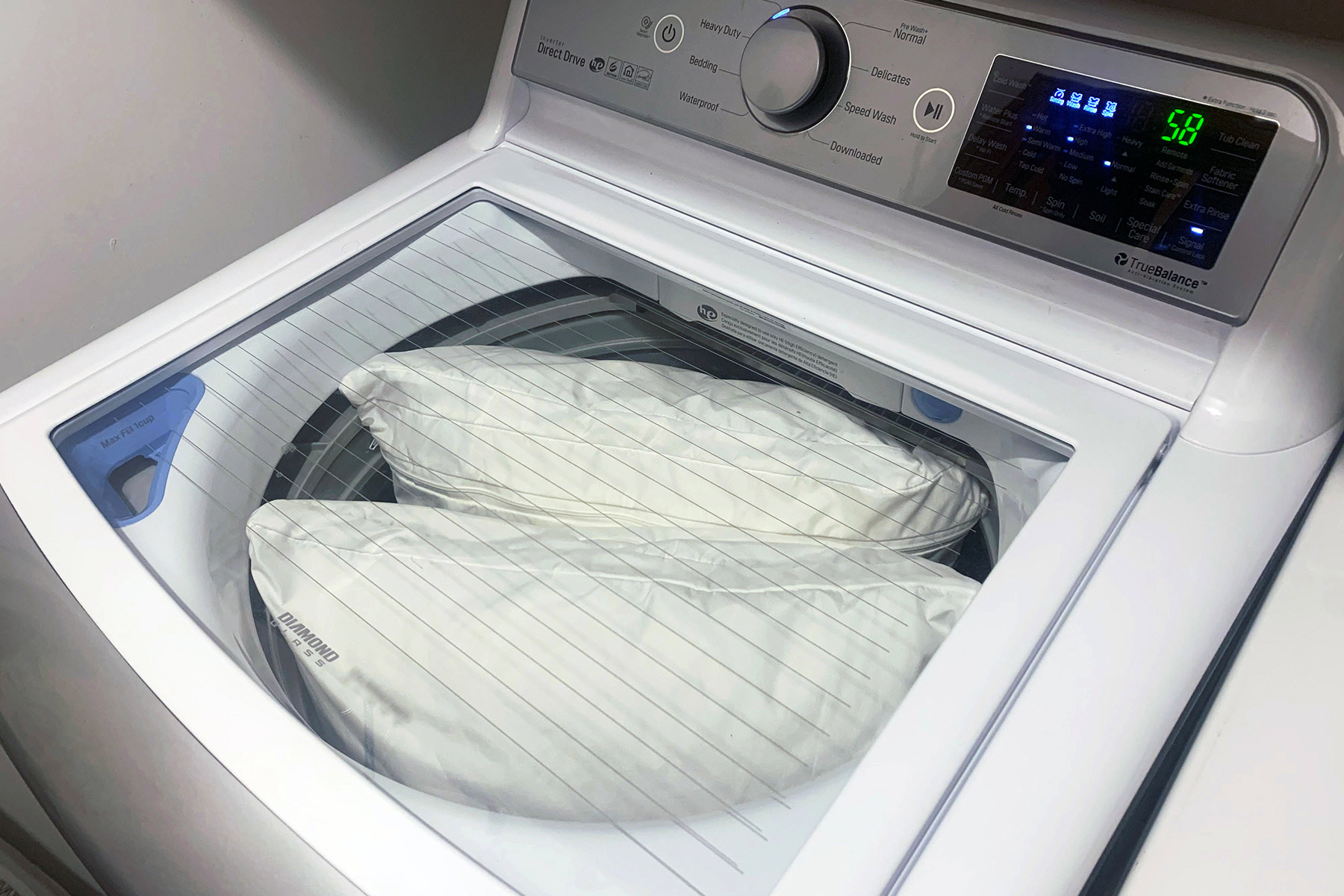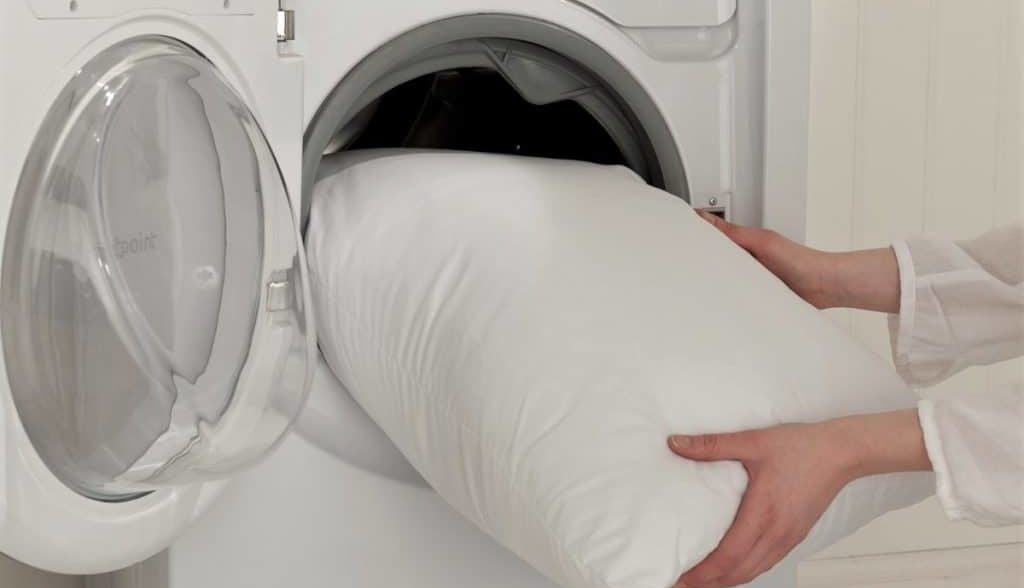How to Wash Pillows- Ultimate Guide
There’s a long list in every house of things you commonly forget to clean. The list goes on to include makeup brushes, air vents, house plants, and last but not least, pillows.Who wakes up every day to think about washing their pillows?
The answer is no one.
Is it alright to leave these without being cleaned, though? No, not when they’re touching your face every night and one inch away from where you are breathing for 6-8 hours while sleeping.
Not washing your pillows properly and regularly can lead to allergies acting up, acne breakouts, and other skin/health conditions. Luckily there are both hypoallergenic pillows, as well as specialized pillowcases for acne than can help, in addition to exercising proper pillow hygiene.
In this article, I’ll tell you how to wash pillows properly, go over how often they need a good, thorough cleaning, and cover the top FAQs about washing your pillows as well.
How Often You Should Wash Your Pillows
As a rule of thumb, your pillows don’t need as frequent washing as their covers need. While you need to change the covers and clean them once a week, the pillows can wait a little longer.
They’ll need washing twice a year on average, and more if you live in a hot town. For example, if you live in Florida, you’ll want to wash your pillows once every season.
Pillows have covers, so why should you clean them? It’s not like they’ll stain, right? Well, when it comes to pillows, it’s more about eliminating the unwanted guests you can’t see by the naked eye: dust mites.
It’s also about washing off the dirt and grime that comes from your sweat or face oils. Pillows typically have constant contact with our faces throughout the night, and your face’s sleeping state is hardly 100% clean, even if you do wash your face before bedtime.
On top of that, with being slept on every night, your pillows may develop off-putting smells as a result of sweating or drooling throughout the night.

The Steps On How to Correctly Wash A Pillow
Pillows are different; each type needs a different way to wash it. These steps apply to all kinds, but the washing step won’t be the same. I’ll discuss everything in detail below.
Step 1: Fluff the Pillow Out
Before washing the pillows, you should fluff them out and let them out in the air for a while so that any dust in them gets out. In fact, you should do that every day. And every month, you should let them hang on a clothesline for a while. Of course, that’s if the weather allows it.
If your pillows are latex or foam, it’ll be hard to leave them out in the sun. Alternatively, you can
put them in the dryer and turn it on a no-heat cycle.
Although this step isn’t a fundamental part of the washing process, it helps the pillow regain its fluffy form after you’re done with it. It’d be too bad to lose the fluff!
Step 2: Wash the Pillows
Before washing the pillows, make sure they’re not labeled ‘dry clean only.’ If they’re not, then you’re safe to proceed. The washing part is relatively easy; the drying is the step that takes the most time, but we’ll get to it later.
Before washing, check your pillow for wet or dry stains. If you find one, treat it with a stain cleaner before proceeding.
If you’re washing your pillows in a washing machine, it’s better to throw in two pillows at once. That’s if the washing machine allows it. It’ll help the water circulate more effectively, and the pillow won’t be thrown around the washing machine much.
Here’s a brief rundown of each pillow type and how you should wash it.
Memory Foam Pillows
Contrary to common belief, you can wash memory foam pillows. Most people think they shouldn’t be cleaned, and it kind of makes their lives easier. However, it’s not healthy to have a durable pillow without washing it. You’ll be sleeping on bacteria in no time.
The right way to clean these pillows is to remove their protective covers and place them in a tub full of water. You’ll have to hand-wash them since the material is too sensitive for machines.
For each pillow, pour a tablespoon of detergent into the water and mix it using your hands. Then, move the cushion around the water while squeezing it every now and then. You’ll notice the water’s color changing, but that’s just the dirt coming out, so no need to worry.
After you’re done, rinse the pillow under fresh running water, getting all the soap out. This step will probably take more time than washing because memory foam absorbs the soap, making it harder to rinse it out.
Polyester Pillows
Polyester pillows are safe to wash on the washing machine’s gentle cycle. Just make sure to wash multiple pillows at a time to help balance the load. Most polyester pillows come in small and moderate sizes, so it’ll hopefully be easy to do that.
As for the detergent, only use one tablespoon with each cycle. You don’t want the detergent to leave soap residue in the material.
Feather and Down Pillows
Feather and down pillows can go into the washing machine, and they’ll be perfectly safe. You’ll need to pick a mild powder detergent, though, and add it in small amounts. On top of that, you’ll want to pick a warm cycle for delicate products.
You can hand wash them, too, but make sure you massage them thoroughly so that the detergent spreads throughout the material instead of clumping.
Buckwheat Hulls Pillows
Buckwheat hull pillows aren’t that common, but a lot of people still got them. To wash these, you’ll have to take the cover off and wash it separately. As for the buckwheat filling, gather it in a large shallow bowl or any similar container. You can also opt for a large cookie sheet.
Next, set the filling out in the sun for a few hours. It should do the trick and get the insides of the pillow clean.
Cotton Pillows
Before washing cotton pillows, remove the pillowcase or protective cover. Your pillowcase should be washed separately using cold water and any mild detergent. Then, throw the pillows in the washing machine, preferably in doubles, to balance the load.
When adding the detergent, use the regular washing detergent that you use for clothes. Take a cup out of it and pour it into the designated drawer-like container. If you want to whiten your pillows, you can add some bleach and half a cup of borax, but you can only do that with white pillows.
Next, wash the pillows on a hot-water cycle. When it’s done, adjust the settings on a second rinse cycle, and you’re done!
Step 3: Dry the Pillows
Drying the pillows takes more time than washing them because of the clumping materials. Obviously, not all pillows can go into the dryer. In fact, only a few types can, including cotton pillows.
Not letting the pillows dry thoroughly puts them at risk of developing mildew. For types that can’t go into the dryer, you’ll have to hang them out on a clothesline. They’ll take days to dry, especially if you live in a cold area, but it’s the only way to ensure they get dry on the inside.
On the other hand, if your pillow can go into the dryer, it’ll make your process much more manageable. Firstly, you’ll want to avoid the auto-dry setting because it’ll only dry the pillow’s surface, leaving the moisture inside.
Alternatively, you’ll want to dry your pillows on moderate heat for an hour. If you can, add a couple of dry towels to the dryer with the pillows; they’ll help speed the process up.
There’s also one trick you can do to keep the pillows from clumping. If you have tennis balls, toss a couple of them in the dryer.
What’s important is to check the pillows on the inside after they’re supposedly dry. Some pillows will need more time in the dryer. You don’t want to sleep on a pillow that’s still wet on the inside, so make sure not to skip this step.

When Is It Time to Replace Your Pillows?
You can only keep washing pillows for so long. At some point, you’ll have to throw them out and get new ones. There are a couple of signs that’ll tell you it’s time to do just that.
For starters, the pillows will lose their shapes and trying to re-fluff them won’t do any good. Plus, you can do the folding test. Grab the pillow, fold it in half, and leave it. If it bounces back to its original shape, then it’s still okay. However, if it doesn’t, then there’s no use in using it again.
Lastly, there’s the most obvious sign: smell. If you pick an odor of mildew in your pillow, it means the bacteria have gotten the best of it, and it’s time for a new one.
In the end, it depends on the type of pillow you have. Natural feather pillows can stay durable for long years, but synthetic pillows won’t stay as long.
Frequently Asked Questions
If you’re still confused about washing your pillows, here are some of the frequently asked questions about the topic. The answers may help clear some things out a bit.
Enjoy!
Can I put memory foam pillows in a washing machine?
No, the memory foam will start coming apart the moment the cycle starts. The best way of washing it is by hand. If you can’t do that, then don’t wash the pillow altogether. Remember that if the memory foam breaks into sections, it’ll be irreversible.
Can pillow filling come out in the washing machine?
Yes, it can if your washing machine cycle is too powerful for the pillow. The stitching may come apart, thereby causing the fluff inside to come out and go everywhere. That’s why I stressed washing the cushions on a delicate cycle.
To avoid that, you can pull the pillow’s sides around before you throw it into your washing machine and check for any hidden holes or fragile stitches.
Can I wash my pillows with blankets or sheets?
I don’t recommend it.
It’s best to wash the pillows on their own to make sure they get adequately rinsed. If you absolutely have to do it, make sure before you dry the pillows that there’s no soap residue on them. If you need, you can rinse them using your hands in a large tub, then leave them to dry.
Is there any alternative to adding tennis balls to the dryer?
You can add dryer balls, but tennis balls will leave a better effect. You can skip this step altogether if you don’t have tennis balls. It’s optional, but it’s always better to do it so that the pillows stay fluffy. Alternatively, you can fluff them up yourself after they’re dry.
Can I wash beaded pillows in the washing machine?
No, you can’t.
The beads will all come apart, and you’ll end up with an unfixable pillow. It’s better to wash those by hand. Still, you’re going to have to be very careful, or else the beads will all come out.
How often should I actually wash my pillows?
You should wash your pillows once you notice they’re getting dirty or smelly. How long it’ll take them to reach that state depends on where you live. If you live in a humid climate, you’ll probably have to wash them often—once every few months, for example.
On the other hand, if you live in a cold area or don’t sleep on the pillows every day, it will be enough once or twice a year.
Bear in mind that washing the pillows more than you should will can cause their inside pillow fluff to come apart, and they’ll no longer be usable.
Final Thoughts on How To Wash Your Pillow
Washing pillows can be a hassle; I’ll give you that. However, that doesn’t mean to leave them for years without washing them. Keep in mind that any dirt or grime your pillows hold may end up on your face. You sleep on these things every single day, so taking care of them is important.
What’s important is also to decide the best approach for your pillow type and make sure it’s completely dry before letting it touch your bed. Check out our post on how to properly dry your pillow to make sure you take care of your newly washed pillow.
You’ll only have to do this couple of times a year, so you shouldn’t be too worried!

Hello! My name is James, a researcher of pillows and getting a great night’s sleep with over 10 years of experience! Graduate of the University of Kansas with a Physiology Degree. I enjoy writing, camping, reading, traveling abroad, swimming, and educational research. Contact me at the social links below!

